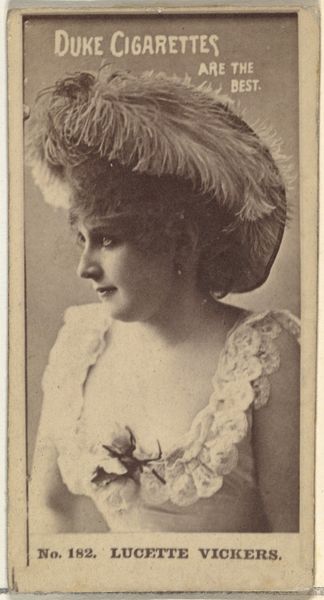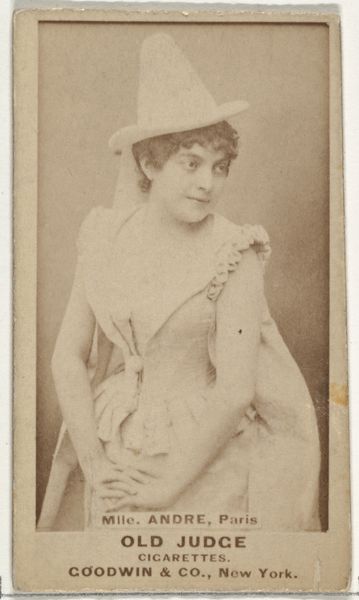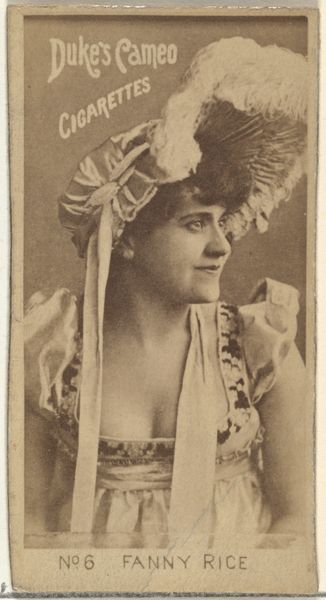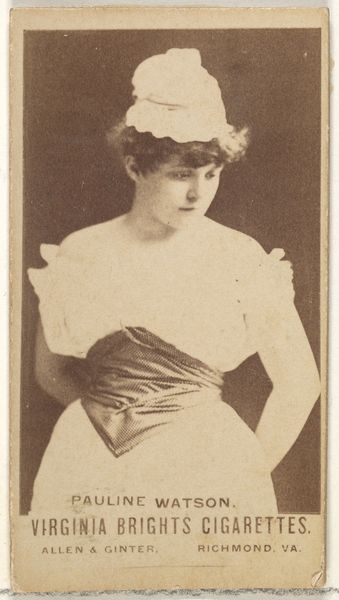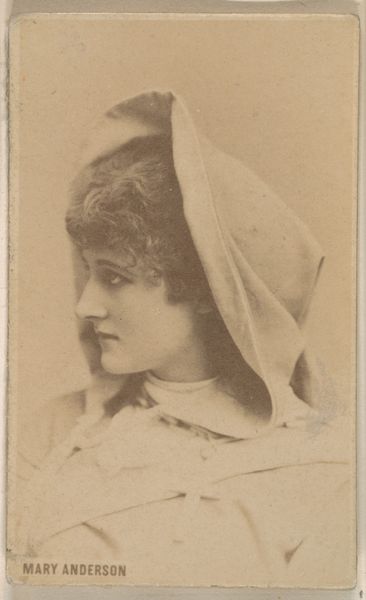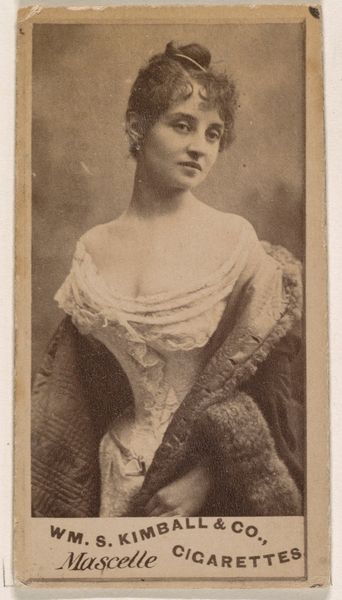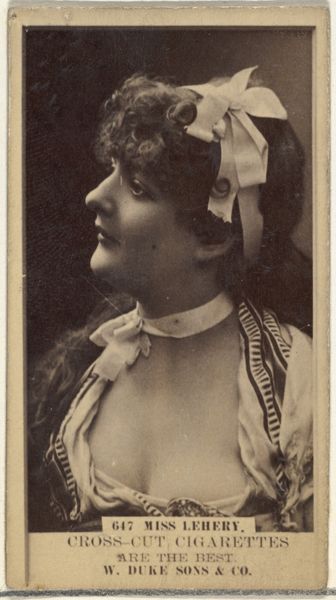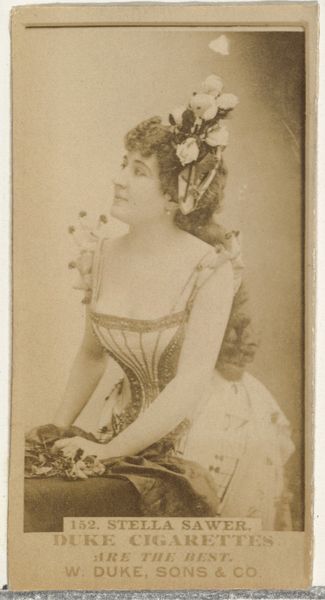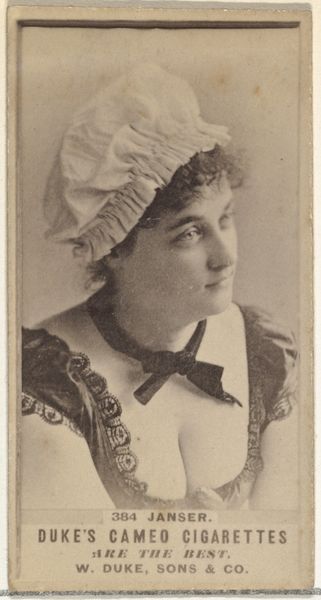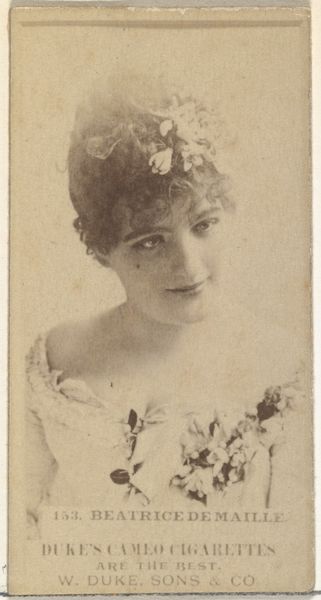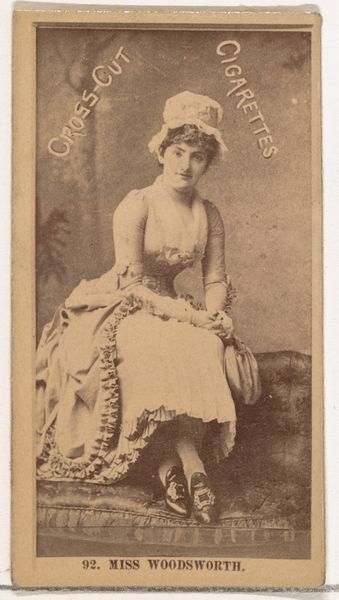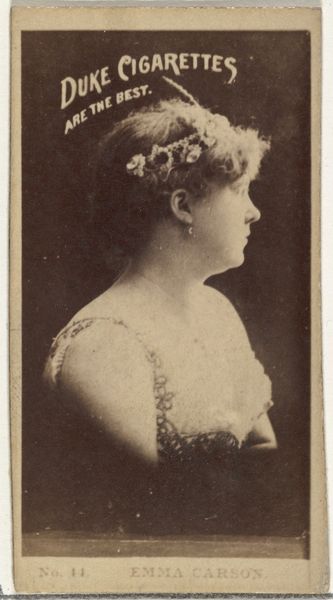
Card Number 82, Carrie Turner, from the Actors and Actresses series (N145-1) issued by Duke Sons & Co. to promote Cross Cut Cigarettes 1880s
0:00
0:00
drawing, print, photography
#
portrait
#
drawing
#
16_19th-century
#
photo restoration
# print
#
photography
#
19th century
Dimensions: Sheet: 2 1/2 × 1 3/8 in. (6.4 × 3.5 cm)
Copyright: Public Domain
Editor: This is "Card Number 82, Carrie Turner, from the Actors and Actresses series," made in the 1880s by W. Duke, Sons & Co. It’s a photo or print promoting Cross Cut Cigarettes. The sepia tone and the subject's direct gaze are striking. What’s your perspective on this piece? Curator: I see this less as a portrait and more as a commodity. Duke Sons & Co. weren’t creating art, they were leveraging the allure of actresses like Carrie Turner to move a product. Consider the industrial printing processes that allowed them to mass-produce these cards, essentially turning a person into a miniature advertisement. Editor: So you're saying the focus isn't on Turner herself, but on her image being reproduced for consumption? Curator: Exactly. The "art" here is in the clever marketing, the way they capitalized on celebrity culture to sell cigarettes. What are the social implications of associating beauty and fame with a highly addictive product? And how does this commercial function change our perception of photography as art? Is this "high art" or "low craft"? I’m curious. Editor: It's fascinating to consider how these images, intended as disposable ads, now reside in a museum. Does that shift their meaning? Curator: Absolutely. Their context has changed. But by examining the means of production, the paper quality, the printing techniques, the very idea of a collectible card inserted into cigarette packs, we understand more about the society that created and consumed them. They are primary material for our social and consumer past. Editor: This really changes how I see the artwork! I was initially focused on the actress, but now I am considering labor and industry in 19th-century America. Curator: And how these objects become intertwined with concepts of beauty, celebrity, and even addiction. All material has a context. Editor: Thank you. I appreciate learning the production, distribution, and societal components within the framework of artwork analysis.
Comments
No comments
Be the first to comment and join the conversation on the ultimate creative platform.
